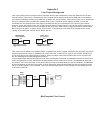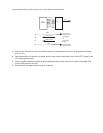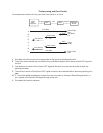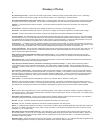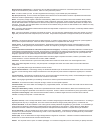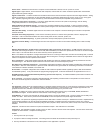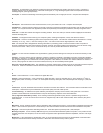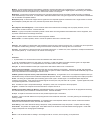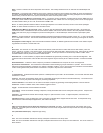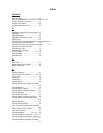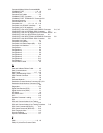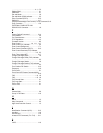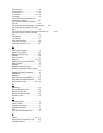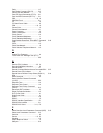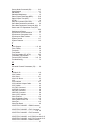Rack: A frame or cabinet into which components are mounted. The industry standard rack is 19" wide and has variable depth and
height.
Rackmount: A packaging style available for many types of electronic equipment which enables the installer to mount the equipment in
an industry standardized enclosure. The rackmount equipment is fitted with brackets, rather than being packaged in its own enclosure.
Rackmounting conserves disk or floor space (real estate) and often conserves power outlets.
RAM (Random Access Memory) (pronounced "ram"): A computer's primary workspace. All data must be stored in RAM (even for a
short while), before software can use the processor to manipulate the data. Before a PC can do anything useful it must move programs
from disk to RAM. When you turn it off, all information in RAM is lost.
RJ-11: An industry standard interface used for connecting a telephone to a modular wall outlet; comes in 4-and 6-wire packages.
RJ-45: An 8-wire modular connector for voice and data circuits.
ROM (Read Only Memory) (pronounced "rom"): A memory chip that permanently stores instructions and data. Its contents are
created at the time it is manufactured and cannot be altered. ROM is used to store control routines in PCs and peripheral controllers.
ROM is also used in the plug-in cartridges for printers and video games. A set of ROM chips contain the basic input/output system
(BIOS).
RS232-C: An EIA standard for a serial interface between computers and peripheral devices (modem, mouse, etc.). It uses a 25-pin DB-
25, or a 9-pin DB-9 connector. The RS-232 standard defines the purposes, electrical characteristics and timing of the signals for each of
the 25 lines.
RTS (Request To Send signal): With communications between modems, an RS232 signal sent from the DTE to the modem request-
ing permission to transmit. Contrast with CTS.
S
Serial Port: The connector on a PC used to attach serial devices (those that need to receive data one bit after another), such as a
mouse, a printer or a modem. This consists of a 9- or 25-pin connector that sends data in sequence (bit by bit). Serial ports are referred
to as "COMx" ports, where x is 1 to 4 (i.e., COM1 through COM4). A serial port contains a conversion chip called a "UART" which
translates between internal parallel and external serial formats.
Switched Line: In communications, a physical channel established by dynamically connecting one or more discreet segments. This
connection lasts for the duration of the call after which each segment may be used as part of a different channel. Contrast with leased
line.
Switched Network: A network in which a temporary connection is established from one point via one or more segments.
Synchronous Transmission: The transmission of data which involves sending a group of characters in a packet. This is a common
method of transmission between computers on a network or between modems. One or more synchronous characters are transmitted to
confirm clocking before each packet of data is transmitted. Compare to Asynchronous Transmission.
T
T1 Transmission: A standard transmission speed of 1.544M bps that may be used in its full bandwidth, or as narrower channels called
"fractional T1" carriers.
Terminal: The screen and keyboard device used in a centralized computing environment for interactive data entry. Terminals have no
"box", which is to say they have no file storage or processing capabilities.
Terminal emulation: This allows a PC to access a mainframe computer by generating and accepting data like a "dumb" terminal.
Threshold: A value or condition which, when reached, triggers an event.
Toggle: To alternate back and forth between two states.
Tone dialing: One of two methods of dialing a telephone, usually associated with Touch-Tone® (push button) phones. Compare with
pulse dialing.
Transistor: A semiconductor device used to amplify a signal, or open and close a circuit. In digital computers, it functions as an
electronic switch.
Twisted pair wiring: A type of cabling with one or more pairs of insulated wires wrapped around each other. An inexpensive wiring
method used for LAN and telephone applications, also called UTP wiring.
U
UART (Universal Asynchronous Receiver/Transmitter) (pronounced "you art"): A chip that transmits and receives data on the
serial port. It converts bytes into serial bits for transmission, and vice versa, and generates and strips the start and stop bits appended
to each character.
UTP (unshielded twisted pair): Telephone-type wiring.
V
V.21: The CCITT modulation standard for 300 bps, full-duplex transmission over dial-up lines.
V.22: The CCITT modulation standard for 1200 bps, full-duplex transmission over a dial-up or 2-wire leased line. This is not common in
North America.



